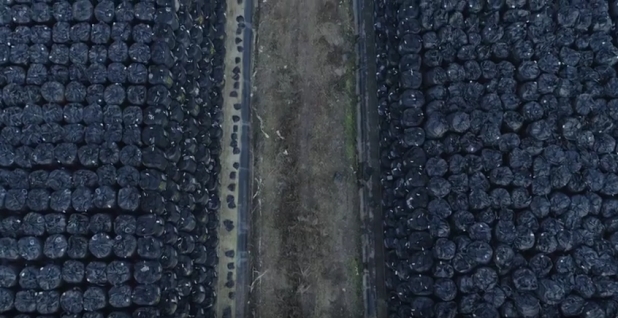Protesters rally against TEPCO approval
Some asked why Tepco is being given approval when victims of the Fukushima disaster have not been given relief. Others said Tepco is unfit to operate nuclear reactors.

Protestors have opposed the Nuclear Regulation Authority’s endorsement of safety measures taken at 2 reactors operated by Tokyo Electric Power Company.
About 20 people, including members of a citizen’s group opposed to reactor restarts, rallied on Wednesday in Tokyo in front of the building where the regulators were meeting.
They raised a banner that said the regulators shouldn’t encourage the restarts.
Some asked why TEPCO is being given approval when victims of the Fukushima disaster have not been given relief. Others said TEPCO is unfit to operate nuclear reactors.
The group handed out petitions to regulation authority employees, demanding that the reactors’ assessments not be approved.
Masahide Kimura of the citizens’ group said regulators must ask whether the public really wants TEPCO deemed capable of running reactors.
He said the regulators’ decision diverges from public opinion, and is not likely to be supported.
Fukushima Nuclear Waste Crisis Is Getting Bigger With Every Passing Day

Youtube: https://youtu.be/zJCumRBl-w4
Nuclear waste storages in Namie, Minamisoma and Iitate, Fukushima prefecture in Japan. Adopting a return to normal policy, the Japanese government undertook an unprecedented decontamination program for areas of Fukushima contaminated by the triple reactor meltdown in March 2011. Fukushima prefecture is 70 percent mountainous forest which has not and cannot be decontaminated, with decontamination efforts focussed along roads and in towns, farmland and in narrow areas around peoples houses. The result has been that the Japanese authorities have produced a nuclear waste crisis, with over 7 million tons of waste located in 147,000 locations (as of August 2017). The Japanese government is determined to force people back to their homes despite the on-going radiation risks and the vast volumes of nuclear waste.
TEPCO president gave order not to call 2011 crisis a ‘meltdown’

NIIGATA–An investigation committee is leveling the blame for the failure to use the word “meltdown” following the Fukushima nuclear accident in March 2011 at Tokyo Electric Power Co. President Masataka Shimizu.
Shimizu instructed TEPCO employees not to use the term on his own and was not following orders from the prime minister’s office, the committee’s report said on Dec. 26.
TEPCO did not publicly confirm that a meltdown had occurred until May 2011.
“There were no instructions (to TEPCO) from the prime minister’s office on whether to use the word ‘meltdown’ or not,” the panel said as to why the announcement was delayed for two months.
The committee was jointly set up by the Niigata prefectural government and TEPCO to investigate the cause of the accident at the Fukushima No. 1 nuclear power plant due to the Great East Japan Earthquake and tsunami of March 11, 2011.
The investigation is a prerequisite for the prefectural government starting discussions on whether to agree to the restart of the Kashiwazaki-Kariwa nuclear power plant, also operated by TEPCO, in the prefecture.
The description of the investigation committee’s report contrasted sharply with a report released in June 2016 by a third-party investigation committee set up by TEPCO.
According to the third-party committee’s report, Shimizu instructed then Vice President Sakae Muto through a TEPCO employee “not to use the word ‘meltdown’ at the direction of the prime minister’s office” when Muto held a news conference on March 14, 2011, three days after the nuclear accident ensued.
As Shimizu’s memory had faded, the third-party committee was unable to confirm details of the “instruction” from the prime minister’s office, but assumed that there was a directive from the prime minister’s office.
Whether an order had been issued by the prime minister’s office became a focus of the investigation of the Niigata prefectural government and TEPCO committee.
According to the joint panel’s report, Shimizu met with then Prime Minister Naoto Kan and then Chief Cabinet Secretary Yukio Edano of the Democratic Party of Japan-led government at the prime minister’s office on March 13, 2011, a day before Muto’s news conference.
In that meeting, Shimizu received instructions from Kan and Edano on sharing information.
Shimizu thought that since the definition of a “meltdown” is vague, an announcement that one had occurred could cause a panic unless the release of such news was made after reaching a consensus with the prime minister’s office.
Based on this reasoning, Shimizu instructed TEPCO’s employees “not to use the word ‘meltdown,’” on his own, he was quoted by the report as telling members of the investigation committee.
-
Archives
- May 2024 (181)
- April 2024 (366)
- March 2024 (335)
- February 2024 (345)
- January 2024 (375)
- December 2023 (333)
- November 2023 (342)
- October 2023 (366)
- September 2023 (353)
- August 2023 (356)
- July 2023 (362)
- June 2023 (324)
-
Categories
- 1
- 1 NUCLEAR ISSUES
- business and costs
- climate change
- culture and arts
- ENERGY
- environment
- health
- history
- indigenous issues
- Legal
- marketing of nuclear
- media
- opposition to nuclear
- PERSONAL STORIES
- politics
- politics international
- Religion and ethics
- safety
- secrets,lies and civil liberties
- spinbuster
- technology
- Uranium
- wastes
- weapons and war
- Women
- 2 WORLD
- ACTION
- AFRICA
- Atrocities
- AUSTRALIA
- Christina's notes
- Christina's themes
- culture and arts
- Fuk 2022
- Fuk 2023
- Fukushima 2017
- Fukushima 2018
- fukushima 2019
- Fukushima 2020
- Fukushima 2021
- general
- global warming
- Humour (God we need it)
- Nuclear
- RARE EARTHS
- Reference
- resources – print
- Resources -audiovicual
- World
- World Nuclear
- YouTube
-
RSS
Entries RSS
Comments RSS


